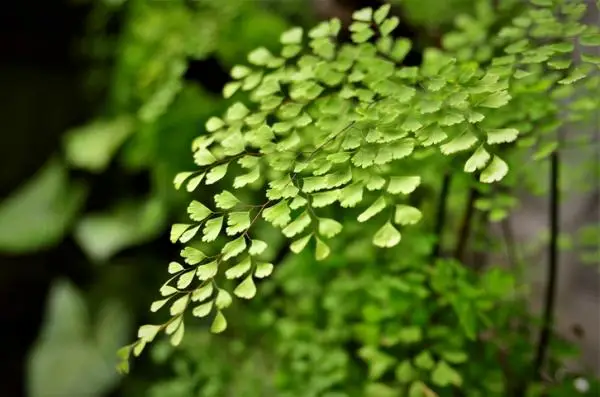The maidenhair fern is a popular houseplant that receives many names for different areas of the world. Some of them are Venus hair plant, culandrillo, pit maidenhair, capilera, brenca, fountains grass or spider, although its scientific name is Adiantum capillus veneris .
If you want to learn more about this fern, very popular as an ornamental plant, join us in this article on caring for the maidenhair , as you will find a very useful practical guide to keep this plant in good condition in your home.
Maidenhair characteristics
It is a native species both in western and southern Europe and in tropical America, where we can find it frequently attached to walls or cave walls, as well as next to streams, in areas usually semi-shady and humid .
Another of the characteristics of the maidenhair is that, usually, it does not exceed 40 cm in height, being the common thing that it is kept smaller than this, one of the reasons why it is highly appreciated as a houseplant.

Climate, light and location of the maidenhair
This fern receives its popular name of grass from the sources because of its natural disposition to be found near these and streams. Therefore, it is easy to come to the conclusion that it is a plant that needs a somewhat cool climate, abundant humidity and be protected from the direct incidence of sunlight.
Thus, the maidenhair has its ideal temperature around 15 ºC and 20 ºC , although it can withstand minimum temperatures of up to 5 ºC and even occasional slight frosts.
Although it tends to be used as an indoor plant, the truth is that Venus hair can be planted outdoors without any problem, as long as we look for a location protected from direct sun , although it is important to bear in mind that its roots spread very easily. , expanding the plant a lot. Indoors, it will be enough to place the pot in a bright room but away from windows and other light sources, or by covering these with curtains that screen it to protect the fern.
Watering the maidenhair
If protecting it from direct light is one of the bases of caring for this plant, keeping the environment humid for it is undoubtedly the other. Maidenhair needs constant humidity, so the substrate must be watered very often to keep it continuously moist.
Because of this, there are many who recommend capillary irrigation , which consists of immersing the pot in water, preferably warm, so that the soil absorbs all the moisture it needs. Of course, in these cases it is vital that the pot has drainage holes , or the accumulated water could cause rotting problems in the roots or drowning of the plant.
It is also necessary to spray its leaves on a regular basis so that the environment remains humid around it. In fact, it is very common to place maidenhairs in bright bathrooms, since the humidity from daily showers helps to keep the plant in an optimal state, and that frequent small splashes are very beneficial.

Substrate and compost for the maidenhair
This plant appreciates having a light substrate rich in organic matter , which maintains humidity well. You can prepare your own mixture by combining a part of peat, a part of coconut fiber and a part of worm castings, to which you must then add a handful of vermiculite and perlite to improve its water retention capacity. You will thus have a substrate that is very rich in nutrients and beneficial microorganisms, as well as light, with good drainage and at the same time good moisture retention capacity.
As for the compost, during the warm months it is grateful for a contribution of common compost or organic matter in the form of worm castings every 15 days, which will help it to stay strong and green.

Dried leaves on the maidenhair
If your maidenhair has brown leaves, it is most likely because the plant is receiving excess light , especially if it occurs during the warm months. Venus hair does not tolerate direct sunlight, so you will need to place it in a more protected place or cover the window or light source with a curtain to mitigate it.
It can also be due to a lack of watering . The process of how to recover a dry maidenhair goes through the irrigation method mentioned above: immerse the pot in warm water for five minutes, and then place it in a place with a soft temperature. In not many weeks it should start to sprout again.
On the other hand, if the wilting on the leaves appears during the winter, it is probably due to the fact that the substrate or soil does not offer enough drainage and the plant suffers from excess humidity . If this happens, remove the root ball from the pot and wrap its roots in absorbent paper. Prune unsightly areas, replant it in a new substrate, or with a part of the old one and a new addition, and stop watering and spraying for a season.
